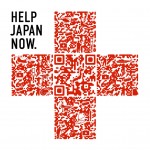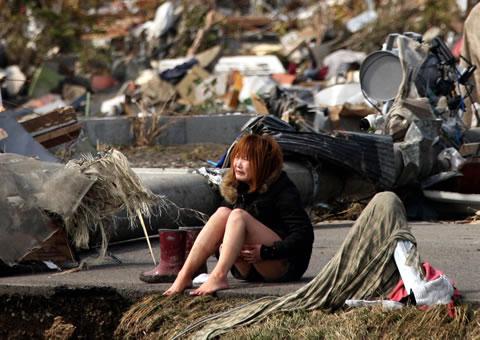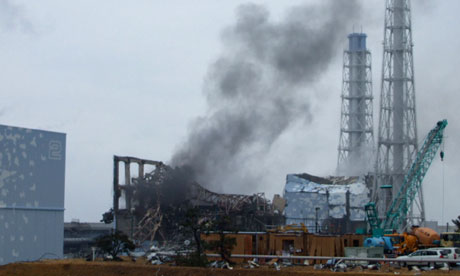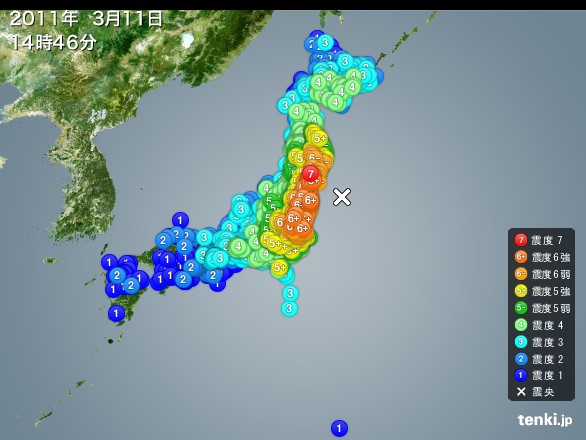Here a trip I recommended few times to my friends visiting Japan:
Day 1 – Tokyo
- Arrival at Tokyo Haneda Airport
- Visit of Harajuku, Takeshita, Omotesando
- Night in Tokyo
Day 2 – Kyoto
- Shinkansen train from Tokyo to Kyoto (about 3h20 trip and ¥14,000)
- Visit of Kyomizu dera and Gion area
- Diner in Pontocho
- Night in Kyoto in a Ryokan
Day 3 – Kyoto
- Visit of temples: Kinkakuji (Golden temple), Ryoanji (garden with 15 rocks), Ninna-ji (pagoda), Nijo-jo (castle of Kyoto + garden ), Ginkakuji (Silver temple)
- Spectacle of Gaisha in the evening at Gion Corner
- Night in Kyoto
Day 4 – Nara & Hiroshima
- Nara: visit of KÅfuku-ji (five-storied pagoda), TÅdai-ji (Great Buddha Hall)
- Hiroshima: visit of A-bomb dome by night
- Hiroshima’s castle park by night
- Night in Hiroshima in a Minshuku
Day 5 – Hiroshima & Miyajima
- Hiroshima: Peace Memorial Museum
- Miyajima: Itsukushima shrine (sea gate), aquarium
- Night in Hiroshima
Day 6 – Himeji & Osaka
- Himeji: Himeji’s castle, zoo
- Osaka: aquarium with whale shark
- Night in Osaka in a western hotel
Day 7 – Osaka
- Osaka’s castle
- Universal Studio
- Shinkansen from Osaka to Tokyo
- Night in Tokyo
Day 8 – Tokyo
- Tsukiji at 5am. To check before, some day the fish market is closed.
- Shopping in Ginza
- Yurakucho
- Imperial garden
- Ueno Museum
- Ueno Zoo
- Akihabara: electronic town. Spend half the day at Yodobashi Camera
Day 9 – Tokyo
- Shibuya: crossing in front of Shibuya 109, ganguro girls
- Picnic in Yoyogi park
- Harajuku: on Sunday noon, young people are wearing some Gothic costumes in front of Harajuku station. Next to Yoyogi park you will find Elvis Presley. Plus visit of the Takeshita dori street for its young shop
- Meiji-jingu temple
Day 10 – Tokyo
- Shinjuku: top of the Metropolitan government building
- Shinjuku Gyoen to observe the sakura (end of March) or momijigari (November)
- Yakatabune (diner in Tokyo Bay)
Day 11 – Tokyo
- Roppongi Hills shopping center. Plus visit by day or night or the last floor for a panorama of the city
- Roppongi Mid-town and Omotesando Hills shopping center if time as well
- Roppongi National museum of Art
Day 12 – Tokyo
- Odaiba artifical island: Decks and Aqua City (for view of the Rainbow Bridge and Tokyo Tower), Venus Fort, Ooedo onsen
- Water bus from Odaiba Marine Park to Asakusa
- Visit of Asakusa Kaminarimon gate, Sensoji Temple, and shopping streets around
- Visit of Tokyo Skytree
Day 13 – Tokyo
- Edo Tokyo Museum
- Grand Sumo Tournament at Ryogoku (2nd Sunday in January, May and September)
- Hamarikyu park
Day 14 – Tokyo
- Flight back home from Tokyo Haneda Airport
Posted in travel | 1 Comment »

More than two months after the Great East Japan Earthquake, still 100,000 people are living in shelters.
- To donate from France:
-
Moreover in France, you can get a tax credit up to 75% of your donation. Meaning if you are able to pay 100€ to help people, you can donate 400€ and it should cost you only 100€.
Posted in news | 3 Comments »

More than 27,000 persons have been killed or are missing following the March 11th TÅhoku earthquake and tsunami.
300,000 quake survivors are living in shelters in precarious conditions, with shortage of water and food.
100,000 children have been displaced.
Reconstruction cost is estimated to $300 Billion, the world costliest disaster since World War II.
- Donation:
-
- The Japanese Red Cross received $490 Million in donation.
- Public donates over $120 Million to American Red Cross to assist Japan earthquake and tsunami survivors
- JDC raises $2 Million, and setup a field hospital with the IDF – the first by any outside nation – in Minamisanriko, one of the many cities decimated by the earthquake and tsunami.
- You can follow on Wikipedia the status of the humanitarian aid.
Posted in news | No Comments »

To ensure every dollars your are giving is going to Japanese victims of the TÅhoku Earthquake and Tsunami, and are not spent in administration or communication expenses or allocated to other causes, carefully select your charity organization. Charity Navigator is an independent, non-profit organization that evaluates American charities. Here the top 5 organizations recommended by Charity Navigator for donation to Japanese victims:
- American Jewish Joint Distribution Committee
- AmeriCares
- Architecture for Humanity
- Direct Relief International
- International Rescue Committee
The American Red Cross is raising fund as well but is not the most efficient. According to Charity Navigator, they need to spend $17 to raise $100. As efficiency comparison JDC is spending just $1.
For whose working in large companies, contact your Communication department and COO to know what is the company solidarity plan with the Japanese people. Some company on top of given a substantial amount of money directly to some charities are matching the contribution of their employees, meaning your donation is much more efficient if channeled through your company. If no corporate donation is planned, gently remind the head of PR that it is part of the social responsibility of the company to stand by the victims and that your competitors are probably more generous. Here a list of the corporate donations.
Moreover the IRS allows you to deduct your donation from your income, meaning you can give more.
Posted in news | No Comments »

11 days after the terrible Earthquake and Tsunami which have devastated northeast Japan, the situation at the Fukushima Daiichi nuclear plant seems stable but far from being under control.
Get the information in time and at the source. Some official agencies in charge of nuclear safety and monitoring:
Posted in news | 2 Comments »

March 11th 2011 at 14h46 JST, M9.0 TÅhoku Earthquake and the following Tsunami (æ±åŒ—地方太平洋沖地震) destroyed the coast line of Sendai. On top on that, the Fukushima nuclear plant has been badly damaged.
All my thoughts are with the families of victims. The 50 fighters at Fukushima which are risking there life are giving a lesson of courage to the world.
Peace on Japan.
- Resources:
-
- Donation:
-
Posted in news | 5 Comments »
Price in USD per minute to call from Japan to France:
| Provider |
Type |
Land to land |
Land to Mobile |
Mobile to Land |
Mobile to Mobile |
| Skype |
Pc |
0.021 |
0.203 |
|
|
| Fring |
iPhone application. Using Skype account. Need Wifi |
|
|
0.021 |
0.203 |
| PennyTel |
iPhone application. Wifi or callback |
0.010 |
0.115 |
0.108 |
0.213 |
| Jajah |
Web application. Callback |
0.056 |
0.220 |
0.180 |
0.343 |
| Truphone |
iPhone application. Need Wifi |
|
|
0.060 |
0.300 |
| Softbank |
Mobile phone carrier |
|
|
1.800 |
1.800 |
The price and currency rates used are the today ones:
- 1 USD = 94.22 JPY
- 1 EUR = 118.74 JPY
- 1 EUR = 1.26 USD
- 1 USD = 1.61 AUD
The bottom line:
- If at home, use Skype on your Pc.
- If in Wifi range, use Fring on your iPhone
- If out of Wifi range, use PennyTel on your iPhone
You can look at VoIP-Sol.com for other solution.
Posted in tech | 2 Comments »

Google will play soon in the playground of Microsoft and Mozilla with its new Web browser, Chrome.
Particularity of this new comer: it has been written from scratch for the today Internet, not for the requirement posted 10 years ago. They are stressing the fact that each tab of Chrome is an independent process, improving speed, memory usage and stability. A nice comics as introduction.
Posted in tech | No Comments »
First, some figures:
- iPhone camera resolution: 1600×1200 (72dpi)
- iPhone screen resolution: 320×480 (160dpi)
- iPhone contact picture display size: 64×64 (160dpi)
- iPhone contact picture display size on call: 320×270 (160dpi)
- Outlook import resolution: 72×96 (72dpi)
Yes Outlook sucks. You can only add into Oulook interface poor resolution image compare to the capacity of the iPhone.
The solution:
- On your PC, resize the image contact to 320×320 (160dpi), knowing that 25 pixels on the top and bottom will be semi-transparent when on call. Or any size bigger with the same ratio, up to 1600×1600 (bigger is sometime not imported into the iPhone photo library)
- On your PC, create a folder iPhone Photos\Contacts and move your contact photos inside
- Sync the photos into your iPhone with iTunes8.0 through the Photos tab. Select the iPhone Photos folder as source.
- Manually associated the photo to your contact on the iPhone (Edit ->Add Photo->Choose Existing Photo)
- Sync back the iPhone with iTunes. The photos will be associated automatically into Outlook with the good resolution this time.
Posted in tech | 55 Comments »
Very surprising, but it is not possible to create group into the iPhone address book directly from the iPhone. The only way so far is to create them on your PC or Mac and synchronize it to the iPhone. After not possible to change a contact from one group to another or edit a group. Still you will need your Mac / PC address book to make the job. The only option on iPhone is to add a new user on an existing group.
On my side, I’m using Outlook. Into My Contacts, right click and select New Folder … to create a new group. After in iTunes the new group will appear and will be synchronize on your iPhone.
Posted in tech | 34 Comments »






